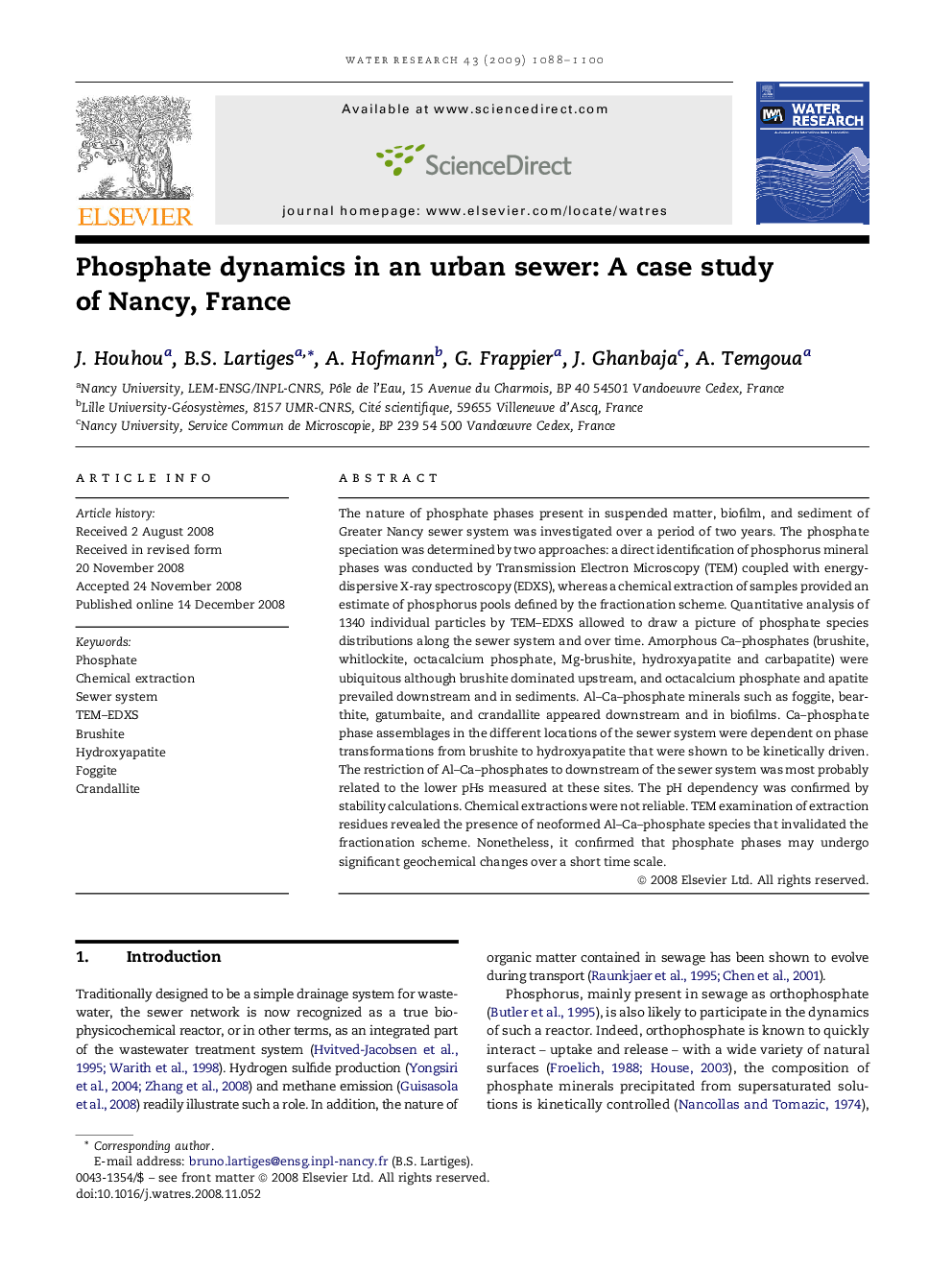| Article ID | Journal | Published Year | Pages | File Type |
|---|---|---|---|---|
| 4484387 | Water Research | 2009 | 13 Pages |
The nature of phosphate phases present in suspended matter, biofilm, and sediment of Greater Nancy sewer system was investigated over a period of two years. The phosphate speciation was determined by two approaches: a direct identification of phosphorus mineral phases was conducted by Transmission Electron Microscopy (TEM) coupled with energy-dispersive X-ray spectroscopy (EDXS), whereas a chemical extraction of samples provided an estimate of phosphorus pools defined by the fractionation scheme. Quantitative analysis of 1340 individual particles by TEM–EDXS allowed to draw a picture of phosphate species distributions along the sewer system and over time. Amorphous Ca–phosphates (brushite, whitlockite, octacalcium phosphate, Mg-brushite, hydroxyapatite and carbapatite) were ubiquitous although brushite dominated upstream, and octacalcium phosphate and apatite prevailed downstream and in sediments. Al–Ca–phosphate minerals such as foggite, bearthite, gatumbaite, and crandallite appeared downstream and in biofilms. Ca–phosphate phase assemblages in the different locations of the sewer system were dependent on phase transformations from brushite to hydroxyapatite that were shown to be kinetically driven. The restriction of Al–Ca–phosphates to downstream of the sewer system was most probably related to the lower pHs measured at these sites. The pH dependency was confirmed by stability calculations. Chemical extractions were not reliable. TEM examination of extraction residues revealed the presence of neoformed Al–Ca–phosphate species that invalidated the fractionation scheme. Nonetheless, it confirmed that phosphate phases may undergo significant geochemical changes over a short time scale.
